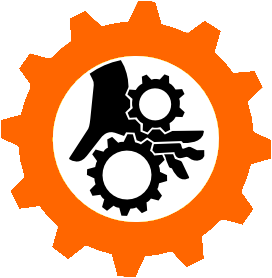Side sneer: the table-saw quote comes from this skeet by Simon W. I’ve concluded that Simon doesn’t know much about the practice of woodworking, even though he seems to have looked up the basics of the history. Meanwhile I have this cool-looking chair design open in a side tab and hope to build a couple during July.
Here’s a better take! Slop-bots are like wood glue: a slurry of proteins that can join any two pieces of wood, Whatever their shapes may be, as long as they have a flat surface in common. (Don’t ask where the proteins come from.) It’s not hard to learn to mix in sawdust so that Whatever non-flat shapes can be joined. Or, if we start with flat pieces of Whatever wood, we can make plywood. Honestly, sawdust is inevitable and easier than planing, so just throw Whatever wood into a chipper and use the shards to make MDF. MDF is so cheap that we can imagine Whatever shape made with lumber, conceptually decompose it into Whatever pieces of MDF are manufactory, conceptually slice those pieces into Whatever is flat and easy to ship, and we get flat-paks.
So how did flat-paks change carpentry? Well, ignoring that my family has always made their own furniture in the garage, my grandparents bought from trusted family & friends, my parents bought from Eddie Bauer, and I buy from IKEA. My grandparents’ furniture was sold as part of their estate, my parents still have a few pieces like dining tables and chairs, and my furniture needs to be replaced every decade because it is cheap and falls apart relatively quickly. Similarly, using slop-bots to produce software is going to make a cheap good that needs to be replaced often and has high maintenance costs.
To be fair to Simon, the cheapness of IKEA furniture means that it can be readily hacked. I’ve hacked lots of my furniture precisely because I have a spare flat-pak in the closet! But software is already cheap to version and backup, so it can be hacked too.


We have EFTs via ABA numbers and they are common for B2B transactions. Retail customers prefer payment processors for the ability to partially or totally reverse fraudulent transactions, though; contrasting the fairly positive reputation of PayPal’s Venmo with the big banks’ Zelle, the latter doesn’t have as much fraud protection.
Now, you might argue that folks in the USA are too eager to transmit money to anybody that asks, and that they should put more effort into resisting being defrauded.